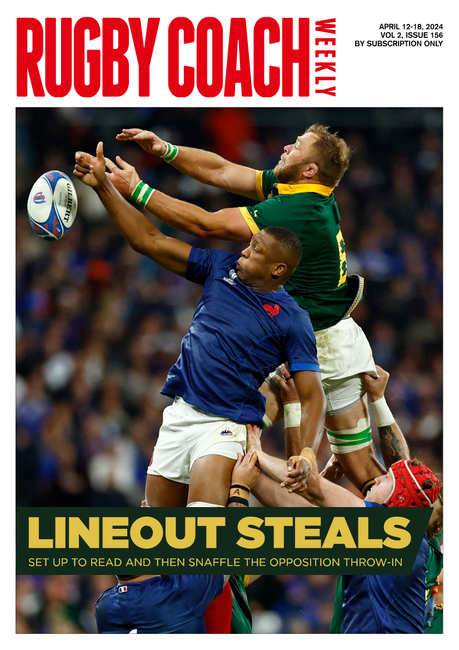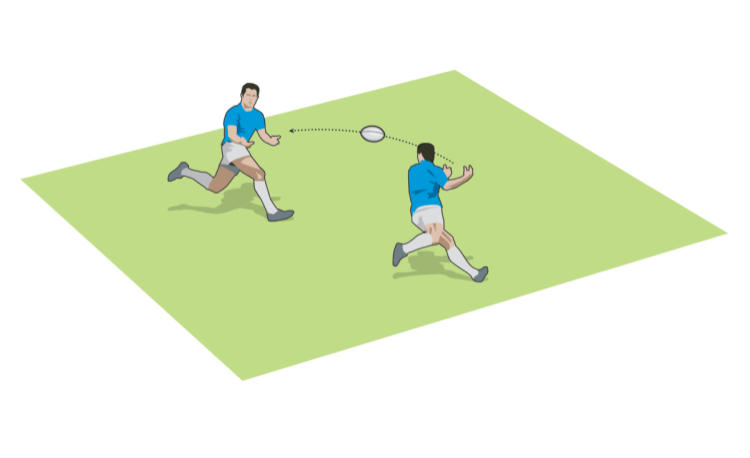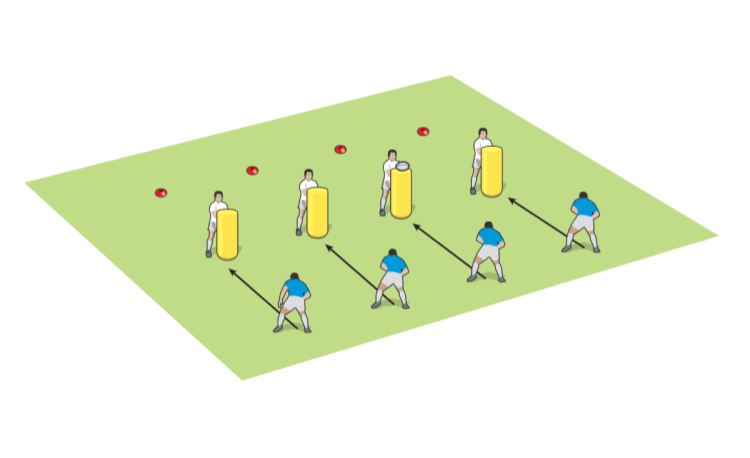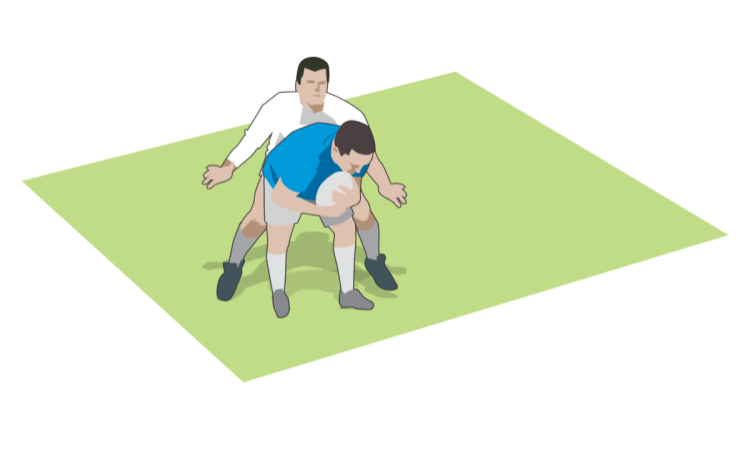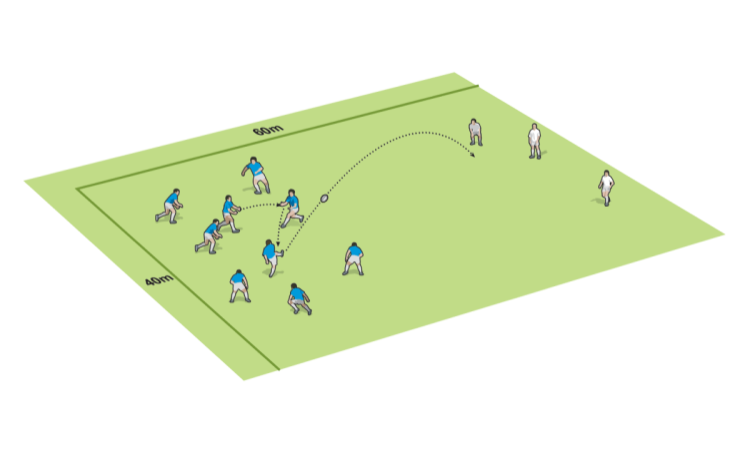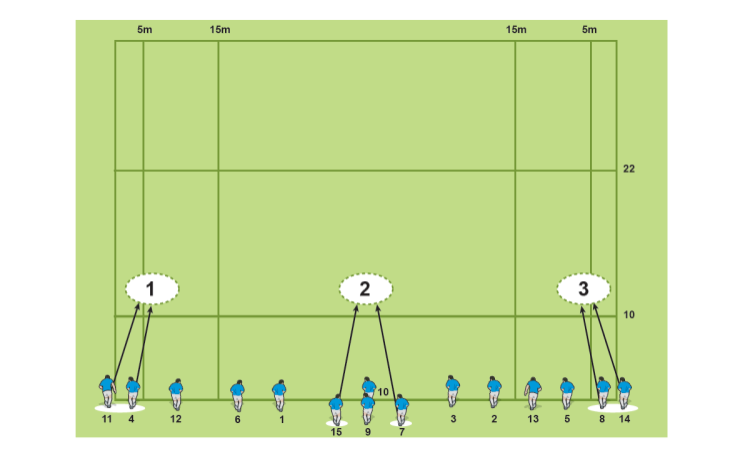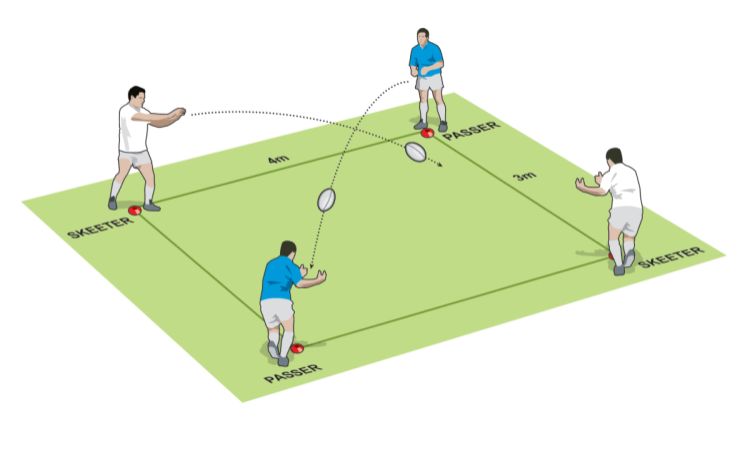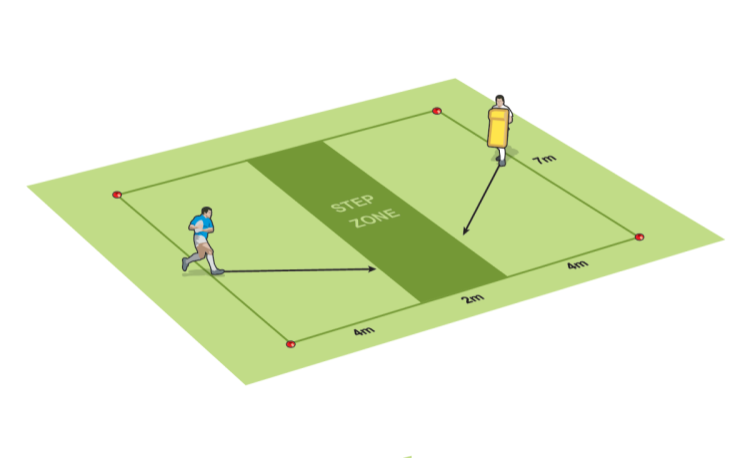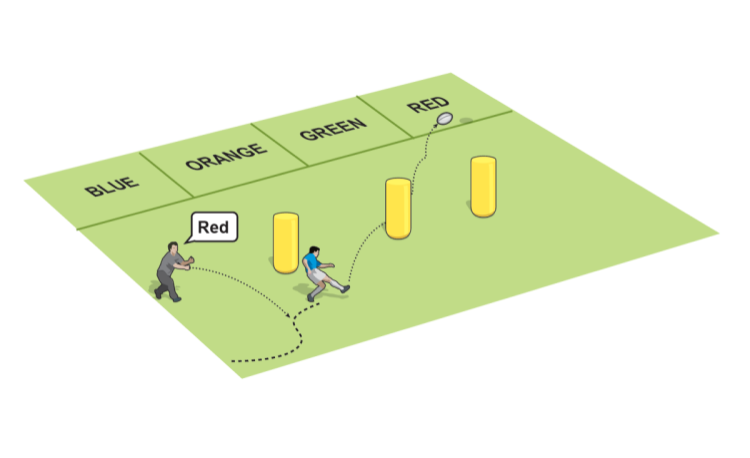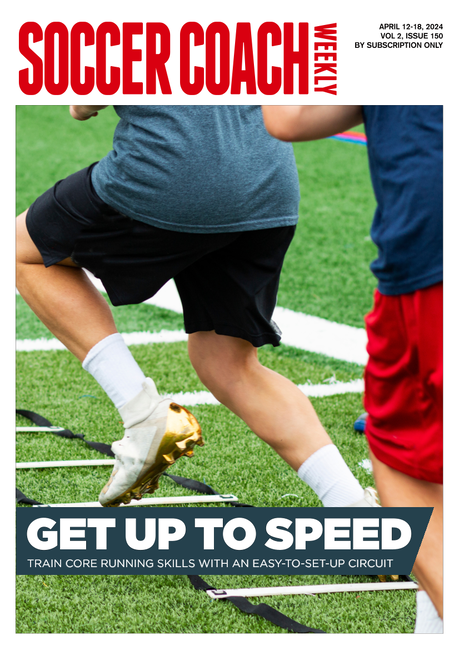You are viewing
1 of your 2 free articles
Slice with 12 and 13
Every successful team will have a number of effective “starter” plays. These are used from a set piece to win the battle on the gain line and, if possible, break it.
Teams often feature one good distributor and another powerful ball-carrier at 12 and 13. There is a simple and productive pattern to get the most out of your resources with this arrangement, commonly called the “slice”.
As the ball is delivered from the set piece (typically a lineout), your 12 and 13 “slice” across each other’s running lines. The distributing 12 shifts from his inside position towards the far corner flag, and the powerful 13 cuts back from out-to-in on a line towards the set piece.
Click
Key points are:
Outside back support
Both examples feature an outside back running in support as the 13 receives the ball on his “unders” line (running towards the pass). In the Wales game, Kevin Morgan (15) starts well outside Tom Shanklin (13) and bends his run back in to get on his outside shoulder. In the England example, Chris Ashton (14) starts inside Manu Tuilagi (13) before moving out into the same support position as Tuilagi makes contact with the first defender.
Timing the slice
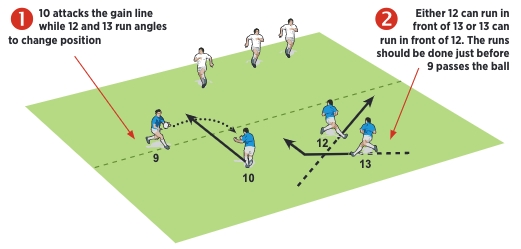
When the ball reaches the 10, both 12 and 13 are in line and can run opposite lines.
The wide option
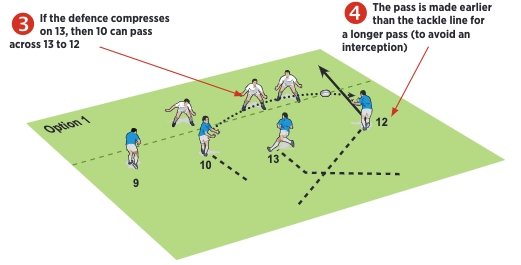
If the defence tightens in the 10 channel, your distributing centre can work the wide channel. In this case, 13 would be used as a decoy, with the pass from 10 to 12 going either in front of or behind the decoy.
Targeting the 10 channel
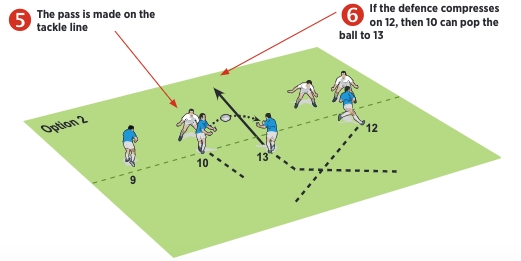
If the defence opens up, put your strongest ball carrier (13) against their weakest defender who is normally defending in the 10 channel. 10 feeds 13 with 12 acting as a decoy runner.
Related Files
Newsletter Sign Up
Coaches Testimonials

Gerald Kearney, Downtown Las Vegas Soccer Club

Paul Butler, Florida, USA

Rick Shields, Springboro, USA

Tony Green, Pierrefonds Titans, Quebec, Canada
Subscribe Today
Be a more effective, more successful rugby coach
In a recent survey 89% of subscribers said Rugby Coach Weekly makes them more confident, 91% said Rugby Coach Weekly makes them a more effective coach and 93% said Rugby Coach Weekly makes them more inspired.
Get Weekly Inspiration
All the latest techniques and approaches
Rugby Coach Weekly offers proven and easy to use rugby drills, coaching sessions, practice plans, small-sided games, warm-ups, training tips and advice.
We've been at the cutting edge of rugby coaching since we launched in 2005, creating resources for the grassroots youth coach, following best practice from around the world and insights from the professional game.


